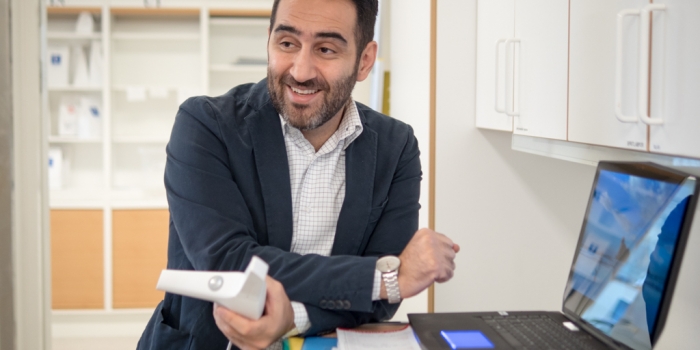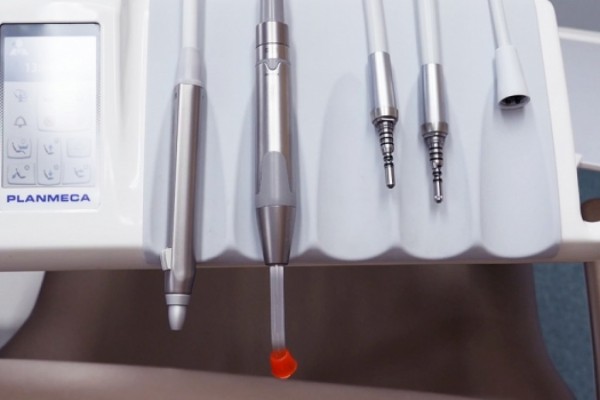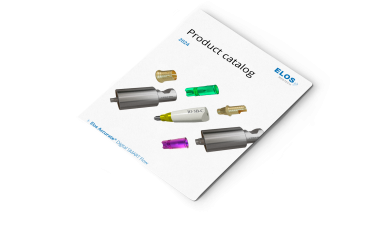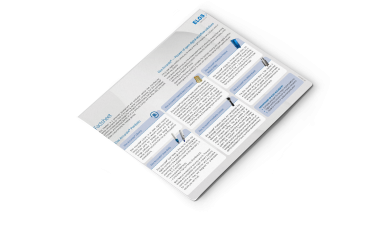In my previous blog post 4 Challenges in Digital Dentistry (Part 3), dentist, dental technician, and researcher, Michael Braian talked about the gap between dentists and dental technicians, the conventional model as the holy grail of dentistry, the use of intra-oral scanners, and the importance of maintaining a balance between simplicity, speed, and reliability in digital dentistry. This last part, however, will be all about the future!
Michael, what are your thoughts on digital dentistry and the future?
It is impossible to say what will happen in the future. But we do know for sure that technology is developing rapidly and that the dental technicians are at the forefront.
A while ago, I visited the Baltic countries to give lectures in digital dentistry. Over there, I witnessed something fascinating. In one of the labs, there were six or seven engineers who had no education in dental care, except for a crash course in ontology. In other words, the engineers were not very skilled regarding teeth, but when it came to handling digital equipment and CAD/CAM skills, they were unbelievable! I have never seen anything like it. I was so amazed watching their workflow, going from one process to another in no time.
Based on what I saw, I think that in the future, engineers will get more influence in dental care because of their digital skills and efficient way of working with the digital techniques.
That sounds spectacular. Does that mean that the use of digital equipment will also increase in the future?
Yes, one of the trends in digital dentistry, which is already strong here in Scandinavia, is the implementation of 3D-printers into the production process.
I recently gave a lecture to a group of 150 dental technicians here in Sweden and asked them if they had a 3D-printer. Surprisingly many raised their hands. This is because today, you can buy a 3D-printer without having to invest a fortune. For a reasonable amount of money, you can get a 3D-printer that increases the efficiency of the production process and the entire digital workflow.
Intra-oral scanners, however, are still quite expensive. There are many dentists out there who are very intrigued by digital dentistry and who are considering purchasing new digital equipment. But the somewhat high price eliminates the sweetness of moving towards a digital workflow. In the future, I hope that more manufacturing companies are willing to further invest in new technology so that a wider range of digital equipment becomes available on the market at a lower price.
About the plaster models – what will happen to them as the digital techniques grow stronger?
I don’t think the plaster model will disappear. But I think the conventional dental labs will become smaller while the digital dental labs will increase in size. This also means that the digital dental labs will have to employ more technicians with digital skills and that digital dentistry will have to constitute a larger part of the educational dentistry programs.
What improvements will be made to the digital equipment in the future?
When it comes to intra-oral scanners, lab scanners and 3D-printers, I think they will become smaller, faster, more precise and more cost-efficient. For 3D-printing, I think there will be a wider range of materials on the market.
At the moment, we are doing a study here at the Faculty of Ontology at Malmö University where we try to figure out exactly how precise and accurate the 3D-printers are at printing polymers compared to using conventional methods. Metal laser sintering is a 3D-printing process that is already frequently used by dental technicians. But I think the use of 3D-printers also for printing polymers will be used to a much larger extent in the future.

What will drive innovation in dental care in the future?
Innovation and new ideas often come from the dental labs and clinics. So I would say dental technicians, dentists, and also researchers will play a big part. The technicians and dentists work in an environment where they can easily combine their creativity and knowledge with the production techniques. Take the 3D-printers for example – they don’t have any limitations in terms of what geometry they can print – just use your imagination! The printing is also extremely fast. If you have an idea today, you can have it printed by tomorrow. The possibility of going from idea to finished products in less than 24 hours allows for learning by trial and error and exceptionally quick feedback, which only nourishes creativity.
As to the researchers, one of their tasks is to keep their eyes on what is going on in the clinics and labs and try to find methods for improving what they do. If the researchers do a good job, the clinics and labs will start using their methods, and there will be a change in market demand. This, in turn, will affect the manufacturing companies to adapt their products to meet these new demands and improve the digital workflow for dental professionals.
Looking at digital dentistry from a global perspective, is there any country that will stand out in the future?
The USA is, and will continue to be, at the forefront of new technology when it comes to digital dentistry. A lot is happening over there, and internet is, of course, playing a huge part in the globalisation of digital dentistry. The fact that a dentist in the USA today can send a digital impression by email to a dental technician here in Sweden means that physical boundaries are erased, and that technology is bringing us closer together.
Last but not least: Do you have any new exciting projects ahead of you?
Yes, I do! We have a group of students here at the Faculty of Ontology at Malmö University who are very interested in the digital techniques, and we do research on intra-oral scanning, lab scanners, and 3D-printing. The number of people in our group only grows by the day as there is a large interest in digital dentistry among the students. We have initiated a number of exciting projects and do all sorts of cool studies, including clinical studies in cooperation with the National Dental Service here in Malmö. But all of them are kept secret until published!
Thank you so much for a lovely conversation, Michael! I hope everything goes well in the future and good luck with that research.
This was the fourth, and last, part of our video blog series with Michael Braian about digital dentistry. Also, read:



